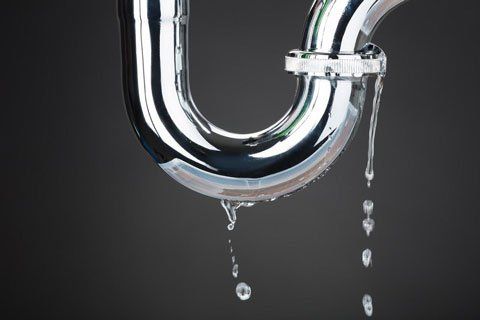How to Inspect If Your House Has a Surprise Leakage
How to Inspect If Your House Has a Surprise Leakage
Blog Article
What're your concepts on Leaking water lines?

Early detection of dripping water lines can mitigate a possible disaster. Some small water leakages may not be visible.
1. Examine the Water Meter
Examining it is a proven means that aids you uncover leaks. If it moves, that indicates a fast-moving leakage. This means you may have a slow-moving leak that can also be underground.
2. Examine Water Intake
If you detect abrupt modifications, despite your intake being the same, it implies that you have leaks in your plumbing system. An unexpected spike in your costs shows a fast-moving leak.
On the other hand, a consistent increase on a monthly basis, even with the very same behaviors, reveals you have a slow leak that's additionally slowly intensifying. Call a plumber to completely check your building, particularly if you feel a warm location on your floor with piping underneath.
3. Do a Food Coloring Examination
When it comes to water intake, 30% comes from toilets. If the shade in some way infiltrates your dish throughout that time without flushing, there's a leak in between the container and bowl.
4. Asses Outside Lines
Don't forget to check your outside water lines also. Must water permeate out of the link, you have a loose rubber gasket. One tiny leakage can lose lots of water and also increase your water bill.
5. Evaluate the circumstance as well as inspect
Homeowners ought to make it a behavior to check under the sink counters and also even inside closets for any kind of bad odor or mold development. These two red flags suggest a leak so prompt focus is needed. Doing regular inspections, also bi-annually, can save you from a significant problem.
Check for discolorations and also weakening as many devices and pipes have a life span. If you think leaking water lines in your plumbing system, don't wait for it to escalate.
Early detection of leaking water lines can minimize a potential disaster. Some small water leaks might not be visible. Checking it is a proven way that helps you discover leaks. One tiny leak can waste loads of water and also surge your water costs.
If you believe dripping water lines in your plumbing system, don't wait for it to rise.
Tips for Detecting Hidden Plumbing Leaks
Check for Signs of Water Damage
We recommend that you check the following places for evidence of water damage:
Near where you store your water heater
Around your sump pump
In areas where pipes are visible
Underneath cabinetry or a vanity beneath a sink
Where your outside hose bib isIf water damage is present, you may also notice mold and/or mildew or smell a foul or musky odor. You might also be able to hear the sound of water running where it shouldn’t be.
Perform a Water Meter Test
One of the easiest ways to determine whether you have a hidden leak on your property is to test your water meter. Turn off all appliances in that use water and make sure you don’t have any faucets running. Locate your water meter and record the reading on it. Continue to leave everything off for a minimum of two hours and then go back and see the meter reading. If it’s a noticeable difference, chances are you have a hidden plumbing leak.
Monitor Your Outside Usage
As the seasons change, you might use more water to keep your yard lush and green and your flowers blooming. However, it’s important to routinely ensure that your sprinkler or irrigation system is working properly and that any outside faucets are completely off. This way you’re not wasting any water.
Do the Toilet Food Coloring Test
Are you kept up at night because your toilet continues to run? If you’ve noticed your toilet randomly refills, especially when it’s not in use, it could mean you have a defective flapper tank and water will leak into the bowl. Fortunately, there’s an easy (and kind of fun!) way to test whether you’re dealing with this issue. Grab some food coloring and add a few drops into your toilet’s tank. Wait 15 minutes and then check to see whether the water in the bowl is colored. If it is, you have a leak within your toilet and the internal assembly will need to be repaired or replaced.
https://www.carterservices.com/blog/2020/february/tips-for-detecting-hidden-plumbing-leaks/

I discovered that page on Top leak detection hacks when doing a lookup on the internet. Appreciated our entry? Please share it. Let others locate it. Many thanks for taking the time to read it.
Report this page